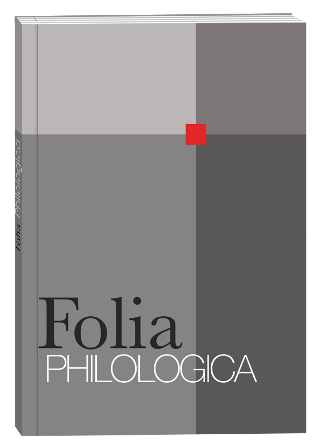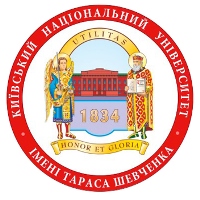GENOLOGY OF MODERN NEW MEDIA: DYNAMICS OF DEVELOPMENT AND APPROACHES TO STUDY
DOI:
https://doi.org/10.17721/folia.philologica/2024/8/11Keywords:
media, genre, genre groups, social media genresAbstract
Modern media genres or social media genres are characterized by multimedia, hypertextuality, and interactivity. These features distinguish them from traditional mass media. Classical or traditional genres are overcoming the multimedia barrier. They are successfully transforming. Simultaneously, new genres emerge, interacting with traditional ones and contributing to the intellectualization of online life. Genre analysis combines approaches from various linguistic and related studies, enabling the identification of homogeneous and heterogeneous features of genres in both synchronic and diachronic perspectives. Within the framework of current paradigms and the syncretism of linguistic and sociological interpretations, genology reveals the dynamics of development, similarities and differences between genres. The development of each genre is a natural, dynamic, and diffusive process that reflects various spheres of life. The challenge of genre analysis lies in their variability and contextuality. Genres are not static and are not always clearly defined; they can evolve over time and adapt to changes in communicative practices and technological possibilities. Understanding social media genres requires recognizing their dynamic and fluid nature, which allows for both adaptation and innovation. Despite a relative stability, contemporary genre studies emphasize the evolutionary nature of genres and point out that social changes, social contexts, and their interpretations and reinterpretations lead to genre modifications, blurred boundaries, and even the erasure of distinctions. With the help of modern media genres that rely on digital technologies, information is generated in real time, personalized for consumers, who thereby have the opportunity to participate in its creation and influence the process of collective media creativity. Thus, one of the prominent examples of the modern hybrid genre is а podcast as the successor to the blog. This study aims to analyze critically existing classifications of modern social media genres and to justify an approach that enables grouping the studied genres based on a set of key parameters.
References
Batsevych, F.S. (2006). Vstup do linhvistychnoi henolohii [Introduction to Linguistic Geneology]. Kyiv : Akademiia [in Ukrainian].
Vaishenberh, Z. (2004). Novynna zhurnalistyka [New Journalism]. (Ed. V.F. Ivanov ). Kyiv : Akademiia Ukrainskoi presy [in Ukrainian].
Derhach, D. (2015). Mediina zhanrolohiia v dyskursi suchasnoho filolohichnoho znannia [Media Genology in the Discourse of Contemporary Philological Knowledge]. Aktualni problemy ukrainskoi linhvistyky: teoriia i praktyka – Current Issues in Ukrainian Linguistics: Theory and Practice, 28, 26–35. Retrieved from: http://nbuv.gov.ua/UJRN/apyl_2014_28_5 [in Ukrainian].
Lyzanchuk, V.V. (2006). Osnovy radiozhurnalistyky [Fundamentals of Radio Journalism: Textbook]. Kyiv : Znannia [in Ukrainian].
Niuzum, E. (2022). Huchnishe! Yak stvoriuvaty podkasty [Louder! How to Create Podcasts]. Kharkiv : Vivat [in Ukrainian].
Palyvoda, A.V. (2012). Slovnyk: novitni media ta komunikatsiini tekhnolohii: kompleks navchalnykh prohram dlia spetsialnostei «Zhurnalistyka», «Vydavnycha sprava ta redahuvannia», «Reklama ta zviazky z hromadskistiu» [Dictionary: New Media and Communication Technologies: A Comprehensive Curriculum for the Specializations ’Journalism,’ ’Publishing and Editing,’ ’Advertising and Public Relations’]. (Ed. V.E. Shevchenko). Kyiv : Palyvoda A. V. [in Ukrainian].
Potiatynyk, B. (2010). Internet-zhurnalistyka [Internet Journalism]. Lviv: PAIS [in Ukrainian].
Rodzhers, E. (2009). Dyfuziia innovatsii [Diffusion of Innovations]. Kyiv: Vydavnychyi tsentr “Kyievo-Mohylianska akademiia” [in Ukrainian].
Serazhym, K. (2003). Dyskurs yak sotsiolinhvalnyi fenomen suchasnoho komunikatyvnoho prostoru (metodolohichnyi, prahmatyko-semantychnyi i zhanrovo-linhvistychnyi aspekty: na materiali politychnoho riznovydu ukrainskoho masovoinformatsiinoho dyskursu) [Discourse as a Sociolinguistic Phenomenon of the Contemporary Communicative Space (Methodological, Pragmatic-Semantic, and Genre-Linguistic Aspects: Based on the Material of the Political Variety of Ukrainian Mass Media Discourse)]. Dysertatsiia d-ra filol. nauk, KNU im. Tarasa Shevchenka [in Ukrainian].
Tymoshyk, M. (2022). Zhanry zhurnalistyky yak naukovo-praktychna problema: do provokatsii fakhovoi polemiky teoretykiv i praktykiv ZMI. [Journalism genres as a scientific and practical problem: on professional polemics provocation of media theoreticians and practitioners]. Ukrainskyi informatsiinyi prostir – Ukrainian information space, 2(10), 14–42. DOI: https://doi.org/10.31866/2616-7948.10.2022.269647 [in Ukrainian].
Kharari, Yu. (2023). 21 urok dlia 21 stolittia [21 Lesson for the 21st Century]. Kyiv : Bukshef [in Ukrainian].
Tsaryk, H. (2023). Podkast yak zhanr suchasnoho mediinoho dyskursu. [Podcast as a genre of media discourse]. Pivdennyi arkhiv (filolohichni nauky) – Southern Archive (philological sciences), 95, 66–72. DOI: https://doi.org/10.32999/ksu2663-2691/2023-95-8 [in Ukrainian].
Shevchenko, L., & Syzonov, D. (2021). Teoriia medialinhvistyky [Theory of Medialinguistics]. L. I. Shevchenko (Ed.). Kyiv : VPTs «Kyivskyi universytet» [in Ukrainian].
Yakhontova, T. V. (2009). Linhvistychna heneolohiia naukovoi komunikatsii [Linguistic genealogy of the scientific communication]. Lviv : Vydavnychyi tsentr LNU imeni Ivana Franka [in Ukrainian].
Bonini, T. (2022). Podcasting as a hybrid cultural form between old and new media. The Routledge Companion to Radio and Podcast Studies, 16-22. Retrieved from: https://www.researchgate.net/publication/358978959_Podcasting_as_a_hybrid_cultural_form_between_old_and_new_media_PRE-PRINT
Briggs, B., & Bauman, R. (1992). Genre, intertextuality and social power. Journal of Linguistic Anthropology, 2(2), 131–172. Retrieved from: https://www.academia.edu/11292501/Genre_Intertextuality_and_Social_Power.
Hanks, W. F. (1987). Discourse Genres in a Theory of Practice. American Ethnologist, 4(14), 668–692. Retrieved from: https://www.jstor.org/stable/645320
Lomborg, S. (2011). Social media as communicative genres. MedieKultur: Journal of media and communication research, 27(51), 55–71. Retrieved from: https://tidsskrift.dk/mediekultur/article/view/4012/5034.
Mammadov, A., & Lewandowska-Tomaszczyk, B. (2022). Analysing Media Discourse: Traditional and New. Cambridge Scholars Publishing.
Miller, C. (1984). Genre as Social Action. Quarterly Journal of Speech, 70, 151–176. DOI: https://doi.org/10.1080/00335638409383686.
Miller, C. (2015). Genre as Social Action (1984), Revisited 30 Years Later (2014). Letras & Letras, 31(3), 56–72. DOI: https://doi.org/10.14393/LL63-v31n3a2015-5.









